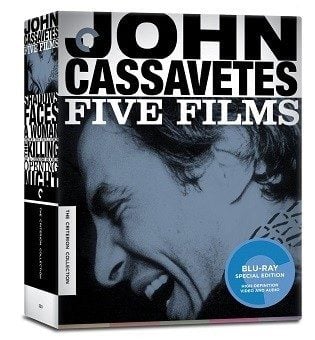John Cassavetes pretty much defined the independent film movement in America during the late 1950s, 1960s, and 1970s. Gritty, uncompromising, bold: his films look like no others and while many may find them indulgent, messily composed, and sometimes uniquely unsatisfying, once seen they’re hard to forget. John Cassavetes: Five Films brings together five of the director’s independent feature projects into one box. While the later pictures are more professional in look and tone than the first two, all five are inimitably the property of their creator.

Studio: Criterion
Distributed By: N/A
Video Resolution and Encode: 1080P/AVC
Aspect Ratio: 1.33:1, 1.66:1, 1.85:1
Audio: English PCM 1.0 (Mono)
Subtitles: English SDH
Rating: PG, PG-13, R
Run Time: 10 Hr. 38 Min.
Package Includes: Blu-ray
cardboard disc holders inside a cardboard caseDisc Type: BD50 (dual layer)
Region: A
Release Date: 10/22/2013
MSRP: $124.95
The Production Rating: 3/5
Video Rating: 4/5 3D Rating: NA
Audio Rating: 3.5/5
Special Features Rating: 5/5
Overall Rating: 4/5
Reviewed By: Matt Hough
Support HTF when you buy this title:





